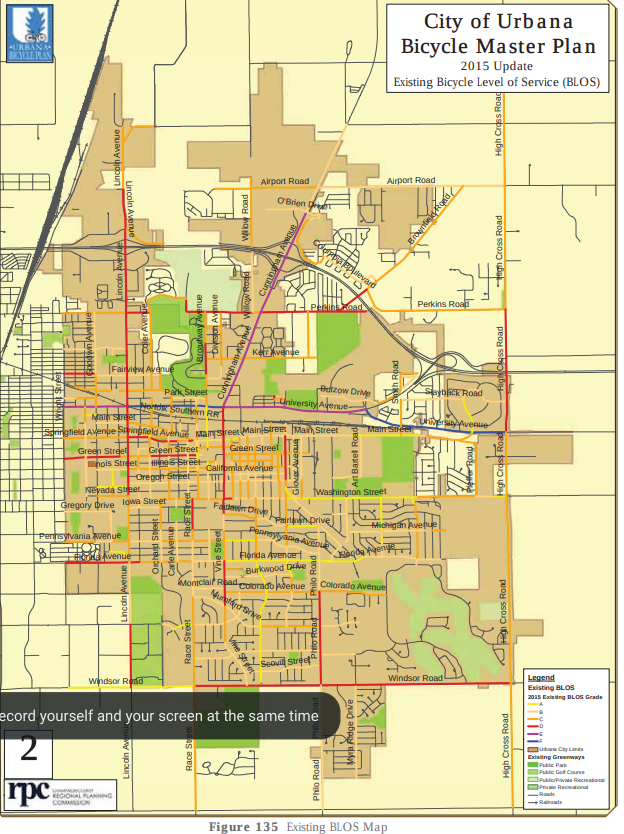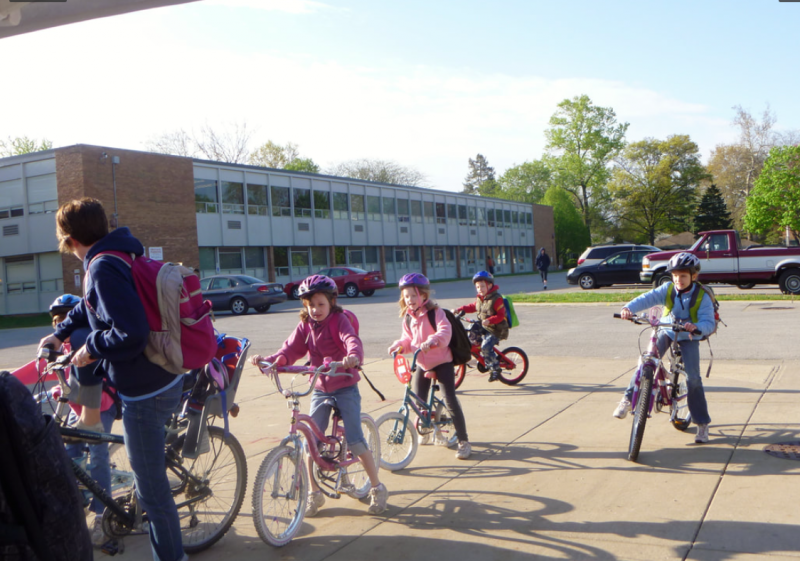When I was in 7th grade, I told my parents that I wanted to ride my bike to school instead of taking the bus. On paper, this should have been an easy “yes”. There are countless proven benefits to riding your bike to school or work including increased physical activity, better mental health, and creating environmentally friendly habits. The distance between my house and the middle school was a very reasonable two and a half miles, and I was very familiar with the way there. Despite this, my parents told me “no”. The reasoning behind the decision was mostly attributed to “morning traffic”, and that was that.
If I had posed the same question of riding my bike to school 50 years ago, it is likely I would’ve been told “yes” even without all the research on the benefits of biking being widely available to the public. Biking to school was simply the norm. According to the National Center for Safe Routes to School, nearly half (48%) of all children ages 5-14 either rode their bike or walked to school in 1969. 40 years later, that 48% declined to 13%. The decline of kids biking to school can be attributed to two main factors that emerged in the late twentieth century.
The first factor is the suburban sprawl of not only new neighborhoods, but new schools. As new schools needed construction from the mid 1900s through to the present, cities opted to build these schools at the edge of town where acreage to build on was cheaper. This trend reduced the amount of students who live within a mile of school from 41% in 1969 to 31% in 2009. Though the proximity to school does have some effect on transportation choices, there is another much more startling statistic that helps complete the picture. Of the 41% of kids that lived within a mile of school in 1969, 89% of them walked or biked to school, but of the 31% that lived within the same distance in 2009, only 35% of them walked or biked to school. This is due to the second factor: the multi-car household.
The sprawl not only necessitated more motor transportation to get to school, but to get everywhere. Parents who moved to the suburbs that were advertised as the ideal place to raise a family now had a longer commute to work. Even parents who stayed at home now had to take a car to get to the grocery store. The new American city was built around automotive transport, so people bought more cars. In 1960 only 22% of households had two or more cars according to the U.S. Department of Transportation, Volpe National Transportation Systems Center. By 1980, just 20 years later, that figure was over 50%. With all the new cars on the road and the longer distances they had to travel, kids under 16 now had to be shuttled everywhere. And even if they did live close to school, why bike there when there was a second car in the driveway ready to drop you off?
As the country drifted further and further away from bikeable city environments, we began robbing children of a critical opportunity — the ability to explore the world on their own. Simple trips to the store or to school without parental assistance gives kids a valuable sense of independence. Independence at a young age not only makes kids more confident and better decision makers, it makes them happier in general. The Netherlands famously has the happiest youth population in the world, and this is largely due to a culture of independence for children. In the Netherlands, 75% of all kids ride their bike to school. This popular habit in the country gives the kids better physical health, better concentration in school due to the morning activity, and little to no reliance on parents to transport them to regular activities; all of which contribute to happier daily lives, and all of which many kids in the US are missing out on. Thankfully, Urbana has made strides in making biking safer and more accessible.
In 2014, the city of Urbana was awarded a Gold Bicycle Friendly Community Award by the League of American Bicyclists. This award is given to communities that meet a standard of bike safety and accessibility that includes a 43% bike mileage network to car mileage network ratio and at least half of schools giving bike safety instruction. Urbana was the first city in Illinois to be recognized with this award, and that is thanks to the Urbana Bicycle Master plan adopted in 2008. Over the course of the several years after the plan was adopted, Urbana increased the mileage of its bike network by 79%, making nearly all major city destinations within a block of a bike route and creating 69 new road segments that are now comfortable for bike riders according Bike Level of Service. In 2016, an update of the plan was adopted that aimed to increase the safety of bike routes by implementing the multi-national Vision Zero plan which aims to eliminate all commuter injuries and fatalities. Oslo, Norway, which has a population of over 630,000 people, adopted the Vision Zero plan in 2002 and had no pedestrian or cyclist fatalities in 2019.
Of course, even though Urbana is a great place for cyclists, it isn’t feasible to bike everywhere. The Urbana Bicycle plan is aimed at casual riders who are teenage or older, so some bike friendly routes still wouldn’t be recommended for elementary school or novice riders. Still despite this, many Urbana schools are located in residential areas with relatively lower traffic volumes and offer bike safety education starting at the elementary level. If you live in the near vicinity of your school, it is worth considering if you have a safe bike route there. Urbana has good accessibility for bikes, and taking advantage of that can be exceptionally beneficial for the rider.
The city of Urbana has spent years developing an environment where we can change the culture of car centric travel that late 20th century America created, but the last step to realizing that environment is in our hands as the residents of the city. With the changes in local infrastructure, we also have to change our mindset about daily travel and take advantage of the bike paths and routes. Bicycle trips in Urbana are now safer in many parts of the city than they were as little as six years ago, safe enough to warrant a change of the decades long conception that biking for A to B is too dangerous of an endeavor.
If you are unsure whether a route is safe or not, below is the Bike Level of Safety map for Urbana from 2015. Everything labeled as grade C or lower means that the casual rider would not be comfortable on that road, and grade A means a child or novice rider would be comfortable there.
A road map of Urbana, with color coding indicating the safety of bicycle riding on streets. Image from Urbana Bicycle Master Plan.









